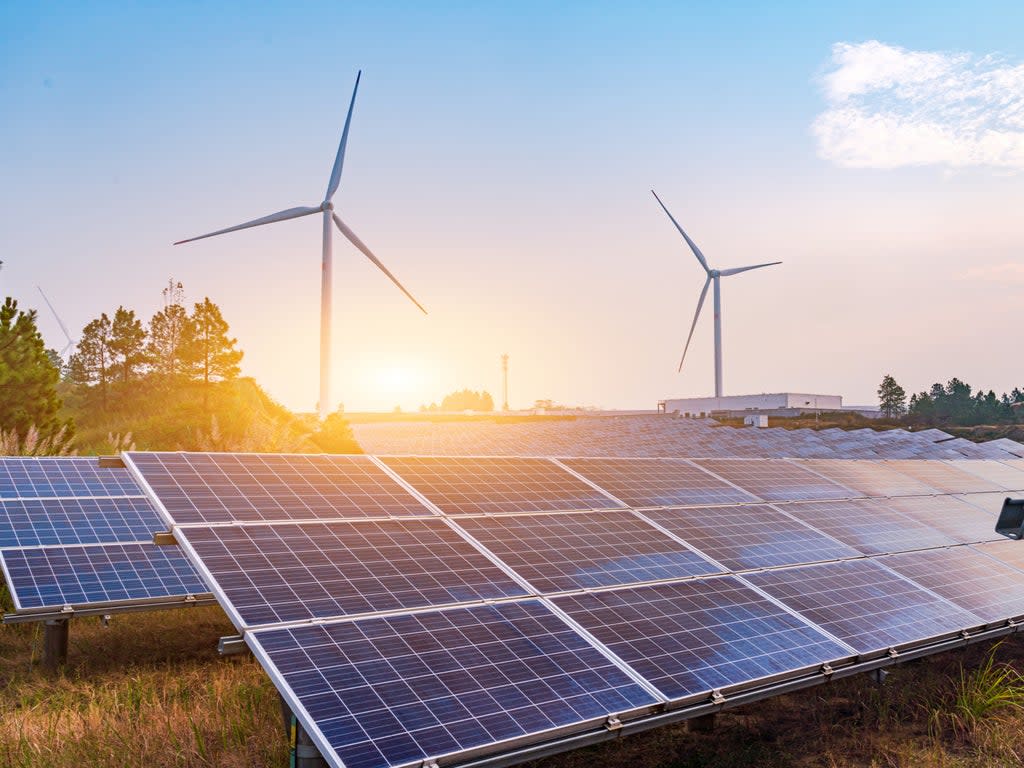The 5 key takeaways from the landmark climate change assessment

The world’s leading authority on climate science published Monday an assessment of how the world can reduce the rate of climate change.
It outlines how we can stay on track to limit global heating to under 1.5 C as outlined in the 2015 Paris Agreement.
More than 270 authors from 65 countries wrote the assessment which is the third chapter of the United Nations’ Intergovernmental Panel on Climate Change report. The first chapter looked at the causes of climate change, the second at the impacts and the third at how we can limit global heating.
Here The Independent has pulled out 5 of the key takeaways from the latest chapter.
Greenhouse gas emissions will have to start declining by 2025 to limit warming to 1.5C
In the scenarios assessed by the authors of the report, limiting warming by around 1.5C requires global greenhouse gas emissions to peak before 2025 at the latest, and be reduced by 43 per cent by 2030. At the same time, methane would also need to be reduced by about a third.
Nevertheless, even if this is done the authors said it was almost inevitable that the world will temporarily exceed 1.5C but could return to below it by the end of the century.
“It’s now or never, if we want to limit global warming to 1.5C, ” said IPCC Working Group III Co -Chair Jim Skea. “Without immediate and deep emissions reductions across all sectors, it will be impossible.”
Even limiting warming to around 2C still requires global greenhouse gas emissions to peak before 2025 at the latest, and be reduced by a quarter by 2030.
Finance is 3-6 times lower than the amount needed by 2030 to keep warming below 2C
The report finds that finance is three to six times lower than the amount needed by 2030 to limit warming to below 2C.
The report finds that there is sufficient global capital and liquidity to close investment gaps.
However, if this money is to be directed, the report says it will require clear signalling from governments and the international community.
The report says that mitigation options costing $100 per tonne of greenhouse gases could reduce global emissions by at least half the 2019 level by 2030.
The global economic benefit of limiting warming to 2C will likely exceed the cost of mitigation
The report finds that global GDP will continue to grow in pathways to limit warming to 2C or lower.
Without accounting for the economic benefits of mitigation action from avoided damages from climate change or from reduced adaptation costs, it is a few percent lower in 2050 compared to pathways without mitigation beyond current policies, the report says.
But the global economic benefit of limiting warming to 2C is reported to exceed the cost of mitigation in most of the reports the authors assessed.
Cost of solar dropped 85% from 2010-2019
The cost of low-emission technologies such as wind, solar and batteries has dropped significantly since 2010 and there has been a large increase in their deployment.
From 2010-2019, the cost of solar energy decreased by 85 per cent, wind energy by 55 per cent and lithium ion batteries by 85 per cent, according to the report. In the same period, solar units were deployed over ten times more and electric vehicles over 100 times more, although this varied across regions.
The policy tools used to reduce costs and spur on adoption include public research and development, funding for pilot projects and subsidies to attain scale.
Changes in our lifestyles and behaviour can result in a 40 to 70% reduction in greenhouse gas emissions by 2050
This would require changes in infrastructure use and socio-cultural and behavioural change, the report says.
It says that “choice architecture” can help people adopt low greenhouse gas emission options such as sustainable, healthy diets, shifts to walking and cycling and sustainable consumption of longer-lived repairable products.
The evidence also shows that these lifestyle changes can improve our health and well being, the report says.
Individuals with high socio-economic status contribute disproportionately to emissions and have the highest potential for emissions reductions, as citizens, investors, consumers, role models, and professionals, the report says.

